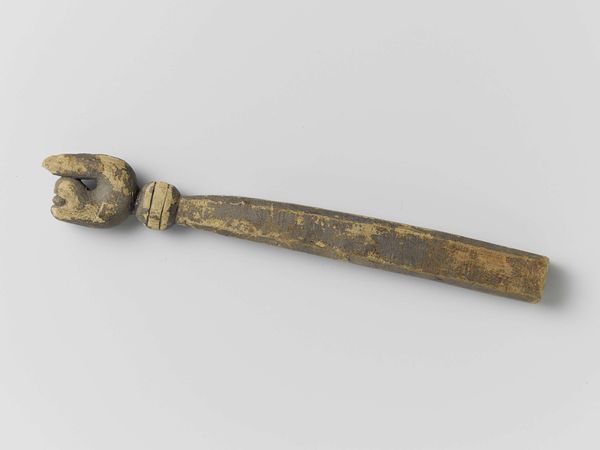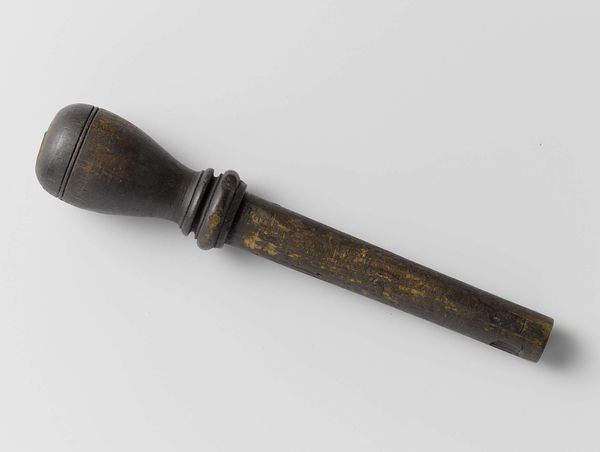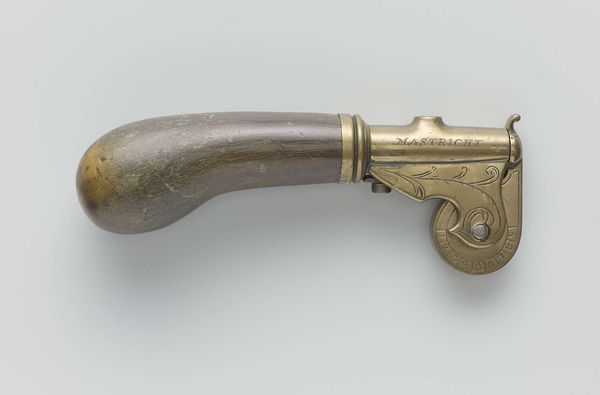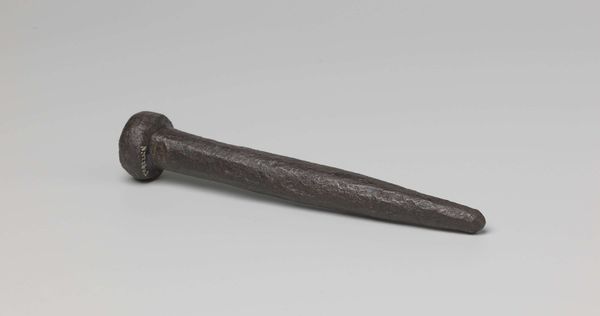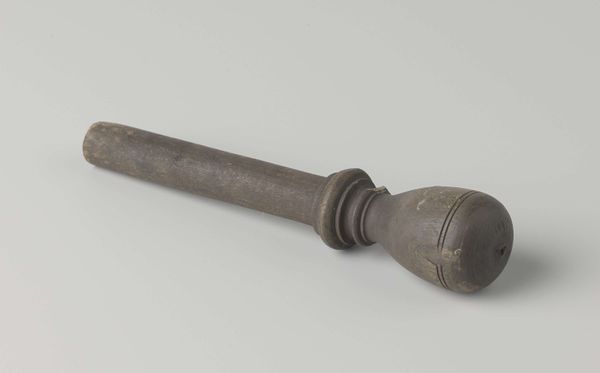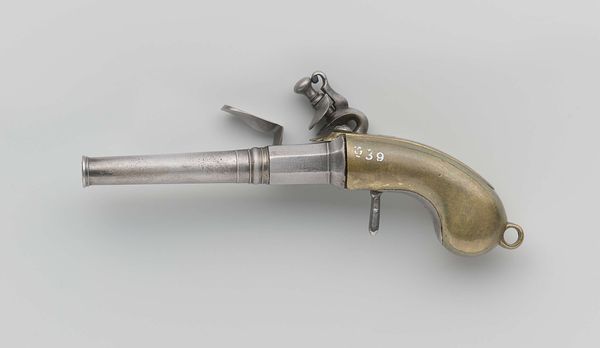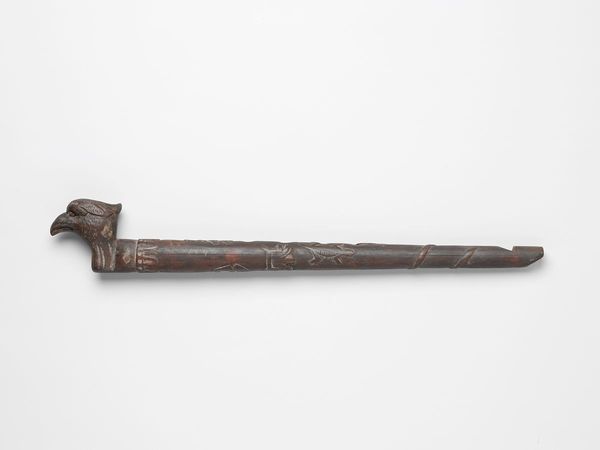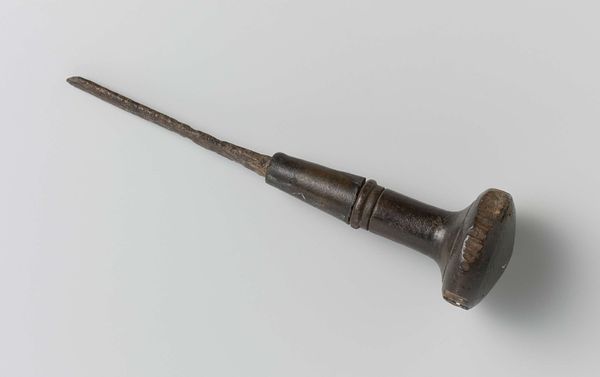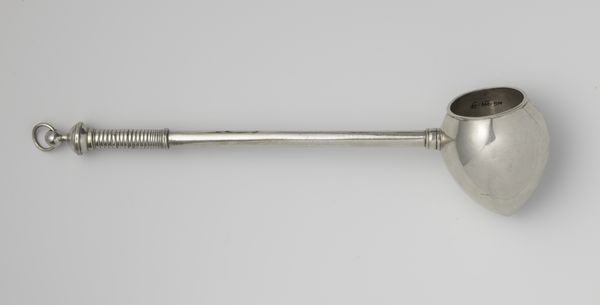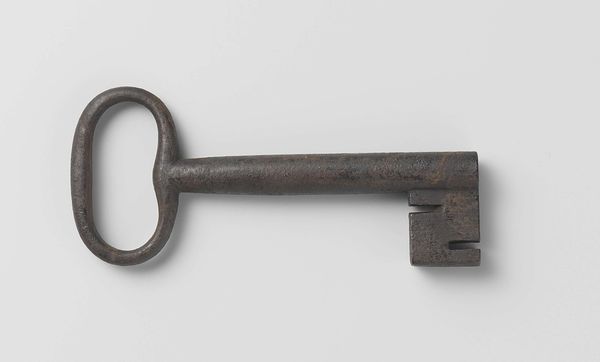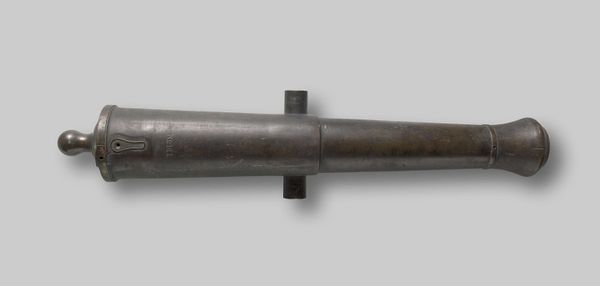
Houten hevel of kraan van een bier- of azijnvat waarvan de kraan taps toe loopt en de mond pyramidevormig is c. 1590 - 1596
0:00
0:00
anonymous
Rijksmuseum
carving, wood
#
carving
#
mannerism
#
wood
Dimensions: height 9.1 cm, width 17.6 cm, diameter 3.1 cm
Copyright: Rijks Museum: Open Domain
Editor: We're looking at a wooden tap, or 'hevel,' for a beer or vinegar barrel. It dates back to about 1590, created by an anonymous artist. It's intriguing how such a simple object can also be a carving. What formal qualities stand out to you? Curator: The Mannerist influence is evident. The emphasis isn't just on function, but on form and how the constituent parts articulate. Consider the interplay between the cylindrical spout and the pyramidical handle; a subtle manipulation of geometric shapes. Editor: It’s quite tactile! Does the medium of wood play a role in our understanding? Curator: Certainly. Wood’s inherent qualities—its grain, its potential for a smooth finish or a rougher, more expressive texture—are all considerations. The artist clearly manipulated the material to achieve the desired aesthetic. Note how the artist highlights the wood grain. What do you observe? Editor: I noticed that, and also the shape of the handle... It's not purely functional, but artistic too. Curator: Precisely! The pyramidal form elevates the everyday into the realm of art. The Mannerists loved that subtle distortion, pushing against Renaissance naturalism. This piece challenges our expectation of simple utility. Editor: I'm starting to see the real focus is on the shapes, and the texture and inherent nature of the material. Thanks, this was an unexpected perspective! Curator: And I appreciate your insights. By attending to its formal attributes, this common object invites deeper reflection.
Comments
No comments
Be the first to comment and join the conversation on the ultimate creative platform.

